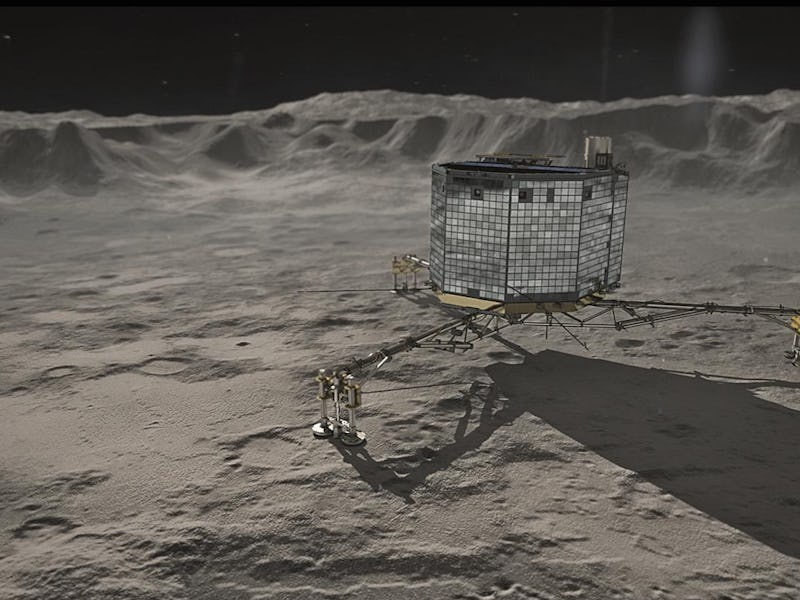We’re Finally Getting Texts from a Comet Probe We'd Feared for Dead
No word on whether it asked "U up?" or not.

Who knew the solar system’s best place for a quick nap was on Comet 67P/Churyumov–Gerasimenko?
Seven months after making news by landing on a comet screeching through space, the Rosetta Mission’s Philae probe lander woke from its hibernation like a lazy college freshman at 4:28 p.m. EST Saturday, and started to send data back to the European Space Agency’s Operations Centre in Darmstadt, Germany. The mission’s primary goal was to gather as much information as possible about comets and their relationship to the sun.
When reached for comment, the lander yawned and mumbled, “I just kinda wanted to make things interesting, nawmean?” before hitting the snooze button again.
Actually, back in November, when the decades-in-the-making mission reached the comet, the solar-powered probe overshot its landing and came to a stop in a shady spot. Without enough sunlight to keep it powered, it beamed back as much surface data about the comet as it could. After 60 hours of operation it ran out of juice and went dar.
ESA scientists had been searching since the Philae lander skipped to the wrong side of the comet. Diligently the probe apparently tried to reboot itself multiple times by turning on and off, but it couldn’t muster the 9 watts it needs to accept communications or the 19 watts to allow two-way communication. The mission’s orbiter began sending signals to the lander in early March like a desperate boyfriend in denial. It got bupkis in return.
Instead, it seems like a bit of luck saved the mission. All the Philae needed to do was soak up some rays in its new spot to fire itself up based on the comet’s proximity to the sun. The lander’s original landing zone would have exposed it to increasingly extreme temperatures that would have fried its electronics.